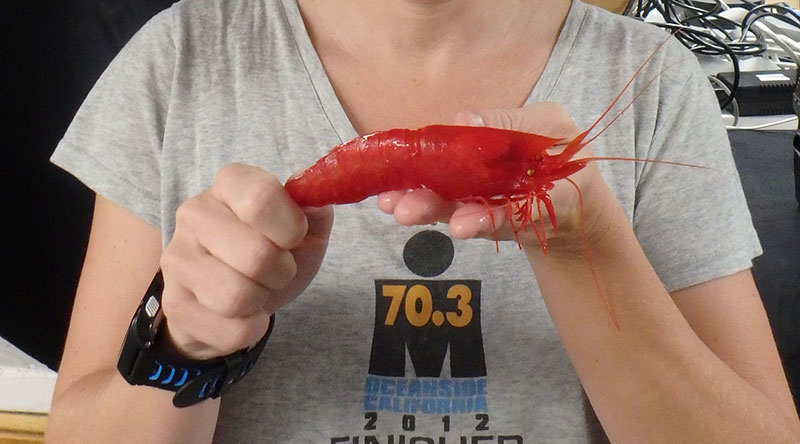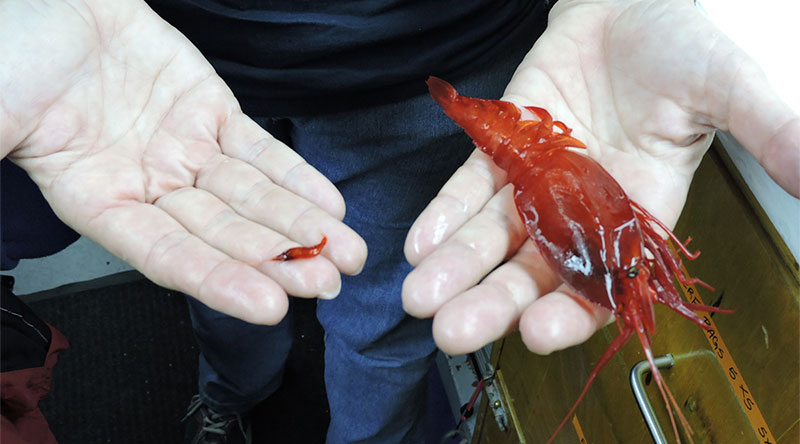
By Tamara Frank, Ph.D., Professor - Halmos College of Natural Sciences and Oceanography, Nova Southeastern University
June 17, 2019

Giant Acanthephyra caught between 1,200 and 1,500 meters (3,937 and 4,921 feet) with the Tucker Trawl. Image courtesy of Journey into Midnight: Light and Life Below the Twilight Zone. Download larger version (jpg, 1.3 MB).

“Normal” shrimp from the twilight zone and “giant” shrimp from the midnight zone. Image courtesy of Journey into Midnight: Light and Life Below the Twilight Zone. Download larger version (jpg, 1.7 MB).
Last night, we ran into a phenomenon that is found primarily in deep-sea invertebrates (animals without backbones). That is the phenomenon of gigantism in the deep sea, when animals grow much larger than their shallow water relatives.
Sometimes in images from deep-sea cameras, you see pictures of giant sea spiders, giant amphipods, giant jellyfish, an occasional giant squid etc., far bigger than the average size that we are used to seeing. Last night it was our turn, and we brought up a giant deep-sea shrimp (image on left), far larger than the size that we are used to seeing (image on right).
Gigantism in animals found exclusively in the water column is usually restricted to below the twilight zone (the mesopelagic zone), meaning below 1,000 meters (3,280 feet; the bathypelagic or midnight zone). There are several explanations for this phenomenon. One is that these species have delayed sexual maturity, so they can put more energy into growth when they’re young, rather than into reproduction. Another, and this is probably one of the most important reasons, is that they have indeterminate growth, meaning that there is no set size at which they stop growing like in humans – as long as they get enough food, and aren’t eaten, they just keep growing and growing (longer and wider, not just wider as in humans). Living in an area where there are fewer predators, i.e., below the twilight zone, also maximizes their chances of reaching these extraordinarily large sizes before being eaten.
However, with a large size comes the drawback of needing more food, and while there are fewer predators below 1,000 meters, there are also fewer prey. So, while your size (and spines, for most of the crustaceans) may prevent predators from going after you so you will not get eaten, you run the risk of starving to death because you cannot find enough food to feed your growing body. That is why the deep sea is not filled with huge shrimp, giant squid are few and far between, and jellyfish the size of cars have only rarely been seen.